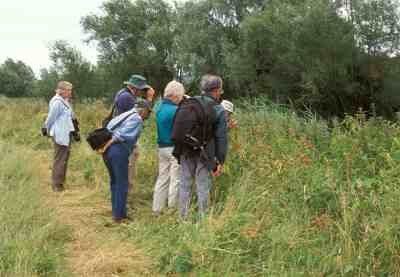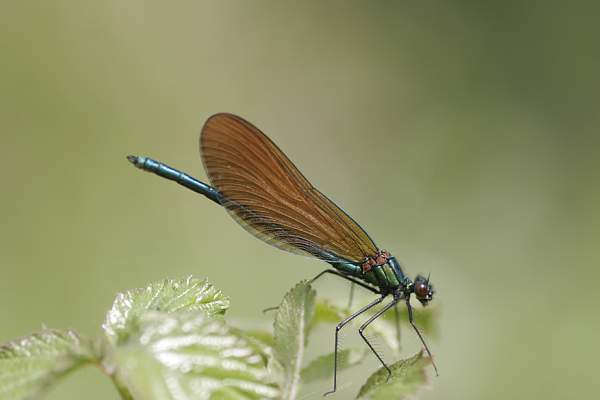|
||||||||||||||||||||||||||||||||||||||||||||||||||||||||||||||||||||||||||||||||||||||||||||||||||||||||||||||||||||||||||||||||||||||||||||||||||||
Warwickshire Dragonfly Group - News page
News for 2008
until 2 September News for 2008 until 18 June Table of Earliest Dates for 2008 13th July 2008 RSPB Reserve, Middleton Lakes 5th July 2008 Adult Identification Workshop, Brandon Marsh 28th June 2008 River Avon, Eckington Bridge, Worcestershire April 5th 2008
Larvae Identification Workshop, Brandon Marsh News round-up for 2008 The reports received suggest that dragonfly numbers are down in 2008 compared to the two previous years. This is probably due to the poor weather during this summer which followed the very wet weather in 2007. There have been some high points during 2008. There was the very unusual sighting of Golden-ringed Dragonfly, see the news for 14 August. There was also a sighting of Black Darter, see the news for 2 September. One report of really good numbers was of 100+ Migrant Hawker by Lloyd Patton at Napton Reservoir on 20 September. We do now have a new Small Red-eyed Damselfly site for 2008. Jonathan Bowley found them at Napton Reservoir on 3 July. The negative report of 2 September was wrong! Two interesting sets of data have come in this year. They are both constant effort sets and made, generally, along the same transect. Mark Smith has been collecting data at the Saxon Mill, Guy's Cliffe, Warwick since 2003 and they suggest that the poor weather for the last two summers have affected populations negatively. No surprise there! The second set of data have been collected by Jim Timms for a sand and gravel quarry reinstatement at Bubbenhall. Jim added dragonflies to the butterfly transect he was doing for the BCS. More will be published on these data sets in time. Back to page top. Table of late flying dragonflies Below are the latest dates for species flying in September, October and November from the records received. There are only two November records, both in the table, for Common Darter. Last year Migrant Hawker and Common Darter were recorded flying until the second week in November, see the 2007 table. Please send in records for any later flying dragonflies or damselflies seen so the table can be updated.
Back to page top. News for 2008 until 2 September Another rare vagrant has been sighted in the county. Roy Ledbury saw a female Black Darter on 18 August at North Warwickshire Golf Club, Meriden. There was a sighting last year but prior to that only in 1997 and 1984. It is worth noting that all the previous sightings were in mid-September - there may be more to come this year. Small Red-eyed Damselflies are again in good numbers at several sites where they are established. But, as yet, no new colonies have been reported this year (see round-up for 2008). Red-eyed Damselflies have been noted in relatively higher numbers in the last month, in similar numbers to previous years unlike earlier in the year when populations seem very low. The distribution maps in the atlas have been updated with the latest set of records I have received (up to 31 August). Back to page top. News for 2008 until 14 August A most unusual dragonfly sighting was reported by Peter Davies in his garden at Dunchurch on 19th July, Golden-ringed Dragonfly. Though Peter is not an experienced dragonfly watcher, my initial scepticism of his report was dispersed by the description he sent and gave me in a subsequent discussion. It is very, very probable he did see Golden-ringed Dragonfly which is a very rare vagrant in Warwickshire. The nearest breeding population is probably that at Catherton Common in Shropshire - unless there is an as yet unrecorded populations near Dunchurch! It is thanks to Peter's careful observation and report that we have this rare record. All known breeding Warwickshire dragonflies are now flying in the county, see earliest dates above. The numbers of individuals of some species seems to be lower than has been typical in the past few year. As note above, Red-eyed Damselflies appear significantly down in numbers this year. This does not appear to be the case with the Small Red-eyed Damselfly, now at the height of its flying season, which visits to Marsh Lane Reserve, Hampton-in-Arden and Swift Valley Reserve, Rugby confirmed. Carefully check any Red-eyes you see to determine if they are Large or Small, see the Red-eyed Damselfly identification page. Try to visit any ponds you know with good submerged and surface vegetation to look for this species and help monitor its spread through the county. The distribution maps for all species have been updated with all records I have received to date. Back to page top. News for 2008 until 18 June
Table of Earliest Dates Recorded The table now has entries for all the county species. The late
emergence of species compared to last year is now less evident than
seemed the case earlier in the year though the position is mixed. Beautiful
Demoiselle, Black-tailed
Skimmer and Emperor Dragonfly
were recorded a few days in advance of the previous earliest date.
However, Southern Hawker, Brown Hawker and Emerald Damselfly were a month or
more later than their earliest recorded emergence in Warwickshire. The Emerald Damselfly, was
exceptionally early last year, 2007. The relatively late emerging Small Red-eyed Damselfly
was sighted a week earlier this year. Probably the mild winter of 2006/7 and exceptionally mild early spring (see Met Office 2007) allowed the larvae to start feeding early and progress rapidly to emergence in 2007. The 2007/8 winter and early spring were also mild but not exceptionally so (see Met Office 2008). The poor weather last summer and this spring may have delayed emergence and reduced numbers of some species this year. In particular the Red-eyed Damselfly, appears to be present in small numbers this year relative to other years. The 2008 earliest dates are highlighted in red.
If you have any earlier dates for 2008 or earlier years please let me have them. Back to page top. RSPB Reserve, Middleton Lakes, Warwickshire/Staffordshire border - 13 July 2008 This field day was at the RSPB's new reserve which is yet officially open to the public. The reserve is 160 hectares of exhausted gravel quarrying. There are a number of water bodies of varying size on the site, mostly still at an early successional stage. The RSPB is still working on profiling some pools. Very little dragonfly recording has been done on the site and we were hoping to start the process. A very good turn out of more than thirty gathered at the car park. Most were from the Warwickshire Group but about half-a-dozen were from out of county. Lesley Barton-Allan, Biodiversity Officer for the site, was our guide. We set out in warm conditions under grey skies to tour as much of the area as possible. We were occasionally blessed with a sunny period and we started to find and record dragonflies. We visited pools and the river Tame which bounds one side of the reserve and gradually worked to the north of the site. After lunch we reached the pools in the north which are still very raw with little vegetation. But Black-tailed Skimmers were already there exploiting them. On our return route we found a delightful small pool, at a much later successional stage than most on the site, with emerging Common Darter. A number of exuvia were recovered. In total we found ten species, none in great numbers. They were: Azure Damselfly, Banded Demoiselle, Black-tailed Skimmer, Blue-tailed Damselfly, Broad-bodied Chaser, Brown Hawker, Common Blue Damselfly, Common Darter, Emperor Dragonfly and Southern Hawker. It was an interesting visit to a site at an early stage of development with great potential to be first rate for dragonflies. Thank you to the RSPB for allowing the access and to Lesley for her help in organising the trip and on the day. Back to page top. Adult Identification Workshop, Brandon Marsh - 5 July 2008 There were nine participants in the Adult Identification Workshop. As
usual, the
day
started with a slide show illustrating the features needed to
discriminate between the various species likely to be seen in
Warwickshire and further afield. The group then
went out into the Reserve to exercise their newly acquired skills. The
weather was not the best for dragonflies but by dint of effort seven
species were found and identified but no species was about in other
than small numbers. River Avon, Eckington Bridge, Worcestershire - 28 June 2008 What a difference a day makes albeit after an interval of a couple of years. The object of our visit to the site, as it was on our unsuccessful visit 2005, was to find the Scarce Chaser. The weather on this visit was bright, warm and breezy and compared with 2005 was much more productive. Sixteen of us assembled in the car park and even before the official proceedings began a small group was seen huddled in the corner of the car park observing and photographing the first Scarce Chaser of the day. A good start!  Before lunch we set
off downstream and it quickly became evident that
Scarce Chaser was present in good numbers. Mature males were stationed
every few metres along the bank. There was plenty of male/male
interaction and a few matings were observed. The other expected
riverine species, White-legged Damselfly and Banded Demoiselle, were
also present in good numbers and showing breeding behaviour. It was
very
enjoyable observing and photographing them all as the picture of some
of the group shows. Before lunch we set
off downstream and it quickly became evident that
Scarce Chaser was present in good numbers. Mature males were stationed
every few metres along the bank. There was plenty of male/male
interaction and a few matings were observed. The other expected
riverine species, White-legged Damselfly and Banded Demoiselle, were
also present in good numbers and showing breeding behaviour. It was
very
enjoyable observing and photographing them all as the picture of some
of the group shows.The count of species mounted. Large Red, Red-eyed, Azure and Blue-tailed Damselflies and Emperor Dragonfly and Black-tailed Skimmer were all present in greater or lesser numbers. We returned to the car park for lunch and to Mike Averill suggesting that Club-tailed Dragonfly was a prospect for the afternoon. After lunch we tried the opposite bank upstream. The Scarce Chaser and the other species were there in similar numbers to the morning excursion. However, much searching fail to yield a Club-tailed and some gave up and returned to their cars. Those who did not in the end got their due reward. A lovely male Club-tailed Dragonfly which, very cooperatively, sat perched on the bank-side vegetation for several minutes allowing observation and photography. There was satisfaction with a good day dragonflying as we returned to our cars. Back to page top. Larvae Identification Workshop, Brandon Marsh - 5 April 2008 As was the case last year, this ID workshop was very popular and
oversubscribed. Some prospective attendees were disappointed. All being
well, it will run again next year. As usual, the day comprised an indoor and an outdoor session. The indoor session started with a short presentation followed by two hours "hands on" learning identification skills with dragonfly exuvia (larval cases). After lunch we went out onto the reserve to try our luck with pond dipping, with some success. Again, as usual, larvae of Large Red Damselfly, Red-eyed Damselfly, Four-spotted and Broad-bodied Chasers and Southern Hawker were found and identified. The day was considered a success by all who attended. Thank you to
the Warwickshire
Wildlife Trust for providing the facilities. Please send any item for inclusion on the news page to: Peter Reeve, Co-ordinator WDG
|
